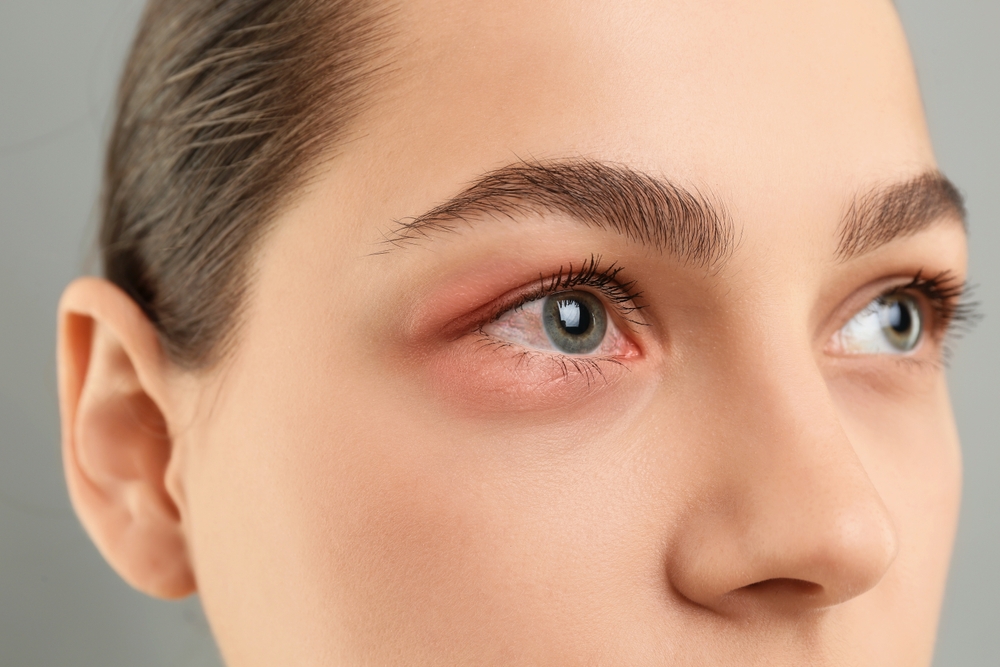
Red eye is a common eye concern that can be both alarming and uncomfortable. While it’s often harmless and temporary, red eye can sometimes signal a more serious underlying issue that requires professional care. Understanding what causes red eye and when to seek medical attention is essential for protecting your vision and overall eye health.
Allergies
Allergic reactions to pollen, dust, pet dander, mold, or other environmental irritants can cause your eyes to become red, itchy, and watery. When your body encounters these allergens, it releases histamines, which trigger inflammation of the conjunctiva (the clear tissue covering the white of your eye). Allergy-induced red eye is often accompanied by other symptoms like sneezing, nasal congestion, and even swelling of the eyelids. Allergic conjunctivitis tends to affect both eyes and may worsen during certain seasons or in specific environments.
Dry Eye
When your eyes don’t produce enough tears, or the quality of your tears is poor, dryness can lead to redness and irritation. This condition, known as dry eye syndrome, is common in people who spend long hours in front of screens, wear contact lenses, or are exposed to dry, windy, or air-conditioned environments. In addition to redness, dry eye may cause a gritty or burning sensation, blurred vision, and increased sensitivity to light.
Conjunctivitis (Pink Eye)
Conjunctivitis is an inflammation or infection of the conjunctiva, the thin membrane covering the white part of your eye and the inside of your eyelid. It can be caused by viruses, bacteria, or allergens. Viral and bacterial conjunctivitis are highly contagious, spreading easily through direct or indirect contact. Symptoms typically include redness, discharge (which may be clear, yellow, or green), itching, and sometimes swelling or crusting of the eyelids. Allergic conjunctivitis, while not contagious, shares similar symptoms but is usually linked to specific triggers.
Contact Lens Wear
Wearing contact lenses for too long, sleeping in lenses not designed for overnight use, or failing to clean them properly can lead to red, irritated eyes. Poor contact lens hygiene can introduce bacteria or other microorganisms, increasing the risk of eye infections such as keratitis. Additionally, contacts that don’t fit well, are damaged, or are worn past their recommended replacement schedule can cause mechanical irritation and redness. Always follow your eye care provider’s instructions for contact lens care and replacement.
Eye Injuries
A scratch (corneal abrasion), a foreign object, or exposure to chemicals can all lead to redness as your eye reacts to the trauma. Symptoms may also include pain, excessive tearing, blurred vision, or light sensitivity. Even if an eye injury seems minor, complications like infection or vision loss can develop if left untreated. Immediate evaluation by an eye doctor is recommended, especially if you suspect a chemical exposure or if symptoms worsen.
Blepharitis
Blepharitis is an inflammation of the eyelids, often caused by a bacterial infection, malfunctioning oil glands, or underlying skin conditions like dandruff (seborrheic dermatitis) or rosacea. It leads to redness along the eyelid margins, crusting or flaking at the base of the eyelashes, swelling, and sometimes a gritty or burning feeling in the eyes. Blepharitis can be chronic and may require ongoing management to control symptoms and prevent complications such as styes or conjunctivitis.
When to See a Doctor
While many cases of red eye are minor, it’s important to know when professional care is needed. Contact your eye doctor if you experience any of the following:
• Severe pain or sensitivity to light
• Sudden change or loss of vision
• Eye injury or exposure to chemicals
• Discharge that is thick, yellow, green, or accompanied by fever
• Redness that does not improve after a few days of home care
• History of eye disease or recent eye surgery
Prompt treatment can prevent complications and preserve your vision.
Contact Eyewellniss for Expert Eye Care
Red eye is a symptom with many possible causes - some minor and temporary, others more serious. While mild redness may resolve with simple self-care, persistent, painful, or severe symptoms could indicate a more significant eye issue that needs prompt attention. Knowing when to seek professional care helps safeguard your vision and overall eye health.
If you’re experiencing red eyes or other concerning symptoms, schedule a comprehensive eye exam with Eyewellniss for personalized treatment. Visit any of our offices in Edgewater, Livingston, Watchung, or Paramus, New Jersey. Please call (201) 945-8931, (973) 535-1171, (908) 322-5020 or (201) 712-0888 to book an appointment today.









